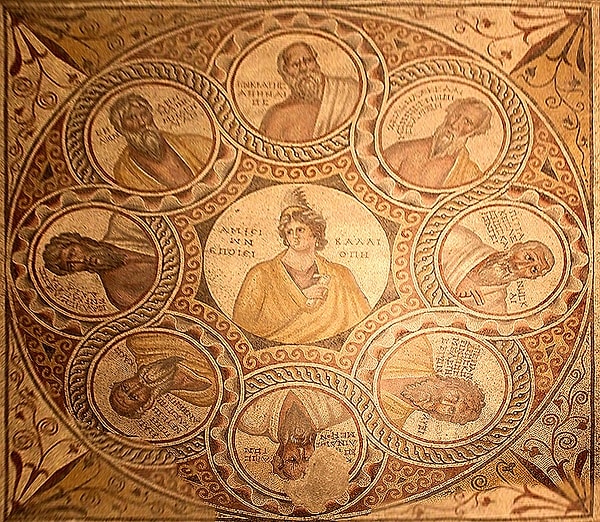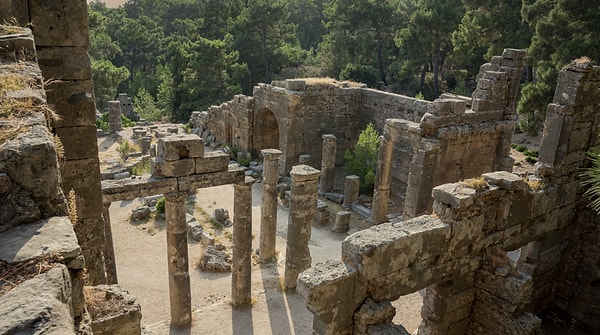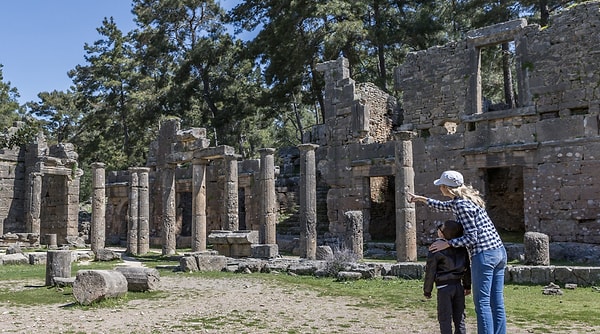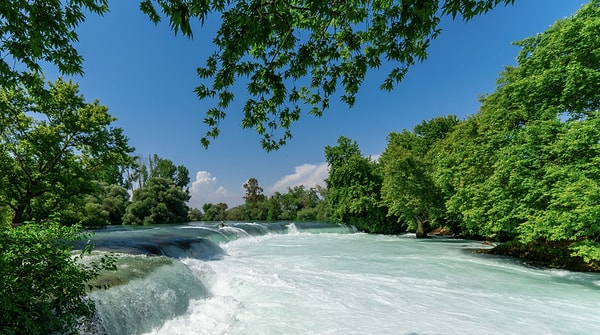Visit Lyrbe Ancient City in Antalya: Explore the Ruins Hidden in Antalya’s Forests
In the south of Turkey, in the Manavgat district of Antalya, on a hill covered with forests, there is an ancient city that has stood the test of time: Lyrbe Ancient City. This ancient settlement, which leaves its visitors alone with both nature and history, is waiting to be discovered with its quiet and fascinating atmosphere away from the crowds. Although it is often referred to as Seleukeia, modern research has revealed that its original name was Lyrbe.
Home to the best-preserved ancient agora in Pamphylia, this city is a special destination that attracts both archaeology enthusiasts and history-loving travellers. If you are looking for a different, impressive and cultural route around Antalya, the Lyrbe Ancient City travel guide is for you.
History of Lyrbe: The Silent Witness of Pamphylia

Although the exact date of Lyrbe's foundation is unknown, it is thought to be an ancient settlement that can be associated with the Luwian peoples of the region. The city was probably rebuilt by the Seleucids in the 3rd century BC and was actively used, especially during the Hellenistic, Roman and Byzantine periods.
In the Hellenistic period, this city is thought to have been called Seleukeia, but archaeological data show that its original name was Lyrbe. This confusion is due to the lack of historical documents and contradictory information in some ancient sources.
It is known that the level of prosperity increased during the Roman period, extensive public buildings were built, the agora was reorganised during this period and the city played an important role in the region commercially and culturally. Lyrbe maintained its importance during the Byzantine period and remained an active settlement until the 5th century.
Lyrbe with Mythology and Legends

Although mythological narratives about the ancient city of Lyrbe are limited, the Orpheus mosaic symbolically connects this city to the fabric of Greek mythology. The mythological story of Orpheus includes themes such as ruling death with music and trying to rescue Eurydice from the underworld. Such iconographic details are valuable in understanding the relationship of the city's people with art and mythology.
The depictions of the Seven Sages in the mosaics suggest that philosophical thought and the education system played an important role in city life. Such symbols show that Lyrbe was much more than an ordinary provincial settlement.
Architectural and Archaeological Aspects of Lyrbe

Agora (Market Place)
The most remarkable structure of the ancient city is undoubtedly the best preserved agora in Pamphylia. Located in the centre of the city, this structure is surrounded by magnificent columned galleries, entrance gates, store rooms and administrative areas. The remains of the two-storey galleries are still standing and offer important clues to the commercial life of the period.
Library and Exedra
To the north of the agora lies the remains of the library, a small but remarkable structure. This structure, which is thought to date back to the Roman period, symbolises the importance given to knowledge and intellectual life. The exedra (seating area) next to it was probably the place where public debates and educational activities were held.
Temples and Cult Buildings
To the east of the agora is a temple platform and possibly a small odeon. These areas, which are thought to have been dedicated to a god/goddess, bear important traces of the religious life of the people of Lyrbe.
Baths and Water Systems
Remains of Roman baths are found in various parts of the city. In addition, the canals and aqueducts supplying water to the city reflect the advanced engineering knowledge of that period.
Mosaics
During the excavations in the city, mosaics depicting the Seven Sages and Orpheus were found. These mosaics are exhibited in the Antalya Archaeological Museum. The Orpheus mosaic is particularly interesting because it symbolises the mythological themes of music, death and rebirth.
Walls and Entrance Gates
Lyrbe was surrounded by strong walls for defensive purposes. There are watchtowers and magnificent entrance gates on the city walls. These structures indicate the military and strategic importance of the city.
The Ancient City of Lyrbe Today

Today, Lyrbe welcomes its visitors as a mysterious ruin hidden in a quiet forest. The fact that it has not been flooded by tourists creates a very special atmosphere for those who want to explore this place. Historical ruins are intertwined with nature. Bird sounds, the sound of the wind and the history embedded in the stones... It offers an experience that makes you feel like you are walking in another era at every step.
There is no ticket office, security or guide at the entrance of the ancient city. This gives the trip a more personal, discovery-oriented atmosphere. However, this also means that the responsibility lies entirely with the visitor. So being careful and respectful is a must.
How to Get to Lyrbe Ancient City?

Private Car Transport: The easiest way to get to Lyrbe is by private car. It is approximately 75 km from Antalya city centre and 12 km from Manavgat district centre. After heading north from Manavgat towards Bucakşeyhler Village, it is reached by a stabilised road of about 3 km by deviating from a forested road.
Public Transport: There are minibuses from Manavgat to Bucakşeyhler. However, the minibuses leave from the village, and you have to walk the last 3 km to the ancient city. This walk can be enjoyable for nature lovers.
Navigation Note: You can find the correct location by searching ‘Lyrbe Ancient City’ on Google Maps. However, some applications may still show this place as ‘Seleukeia’.
Visit Information for Lyrbe Ancient City

Entrance Fee: Free of charge.
Visiting Hours: There are no officially restricted hours, but it is recommended to visit during daylight hours.
Facility Availability: No toilets, kiosks, security or guide services.
What you should take with you: Adequate water, sun cream, hat, walking shoes and camera.
Other Places to Visit Around Lyrbe Ancient City

After visiting Lyrbe, there are many impressive places you can see around Manavgat:
Manavgat Waterfall: It is 8 km from Lyrbe. Ideal for those who want to cool off and spend time in nature.
Side Ancient City: It offers a rich historical experience with its ancient theatre, Temple of Apollo and museum.
Green Canyon (Oymapinar Dam): An excellent location for nature tours, boat trips and landscape photography.
Tilkiler Cave: An impressive cave system for adventure and nature lovers.
Seleukeia Aqueducts and Ancient Bridge: A must-see as an example of Roman engineering.
Keşfet ile ziyaret ettiğin tüm kategorileri tek akışta gör!

Send Comment